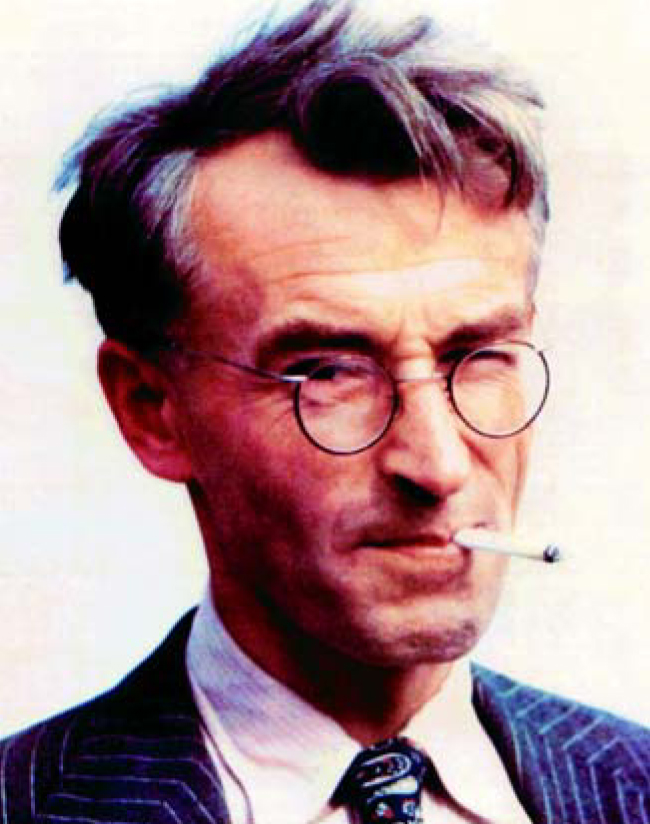Gustav Konrad Medicus
DOI: 10.1063/1.1995759
Gustav Konrad Medicus, who had a long and illustrious career at the organizational predecessors to the present Air Force Research Laboratory at Wright–Patterson Air Force Base (WPAFB) in Dayton, Ohio, died of heart failure on 6 June 2004 at his residence in Spencer, Indiana. His talents covered the scientific spectrum from highly innovative laboratory vacuum and electronics techniques, to sophisticated theory on how patchiness in the metallic-surface work function affects probe measurements, to an explanation of the exceptionally low-voltage “ball-of-fire discharge.”
Born on 28 April 1906 in Augsberg, Germany, Medicus received his MS and PhD in technical physics in 1933 and 1935, respectively, from the Technical University in Munich. Apart from a year with the R. Bosch Co in Stuttgart in 1936, he performed research and lectured at the TUM, and became an associate professor in 1947. He worked in the “electrophysics” department of Winfried Schumann.
At the Bosch Co, Medicus investigated metallized paper capacitors and designed and constructed secondary-emission multipliers. After he returned to the TUM, his work expanded to include the corona discharge, Geiger counters, and polarization by reflection. He immigrated to the US in 1949 under Operation Paper Clip, a US Department of Defense program to bring talented German and other European scientists to work in the US following World War II.
Medicus became a member of WPAFB’s advanced electronic devices branch in the electronic technology division of the Wright Air Development Center. He conducted research on low-voltage arc tubes, especially by means of Langmuir-probe measurements, and investigated some of the original approaches to thermionic energy conversion. He worked with Gottfried Wehner to produce some of the first reliable quantitative data for cathodic sputtering by low-energy ion bombardment. In 1962, Medicus became a senior scientist in the newly organized avionics laboratory at WPAFB.
Medicus is renowned for his development, in 1964, of a system for the automatic plotting of Langmuir-probe curves. His research team introduced the electronic second-derivative system, which measures the energy-distribution function of the plasma electrons. Their work made the system a versatile and more useful diagnostic measurement tool that is still used today in plasma dry-processing for microelectronics. In 1966, he introduced the guard-ring probe and a number of novel techniques for economically fabricating miniature spherical probes. His other accomplishments include making several improvements in gas lasers, developing ultrahigh-vacuum gas valves, inventing matrix-cathode material that is shapeable by plastic deformation, and creating an excenter mill (replacement for a ball mill). He received patents for all of those achievements.
An internationally acclaimed researcher, Medicus was invited to lecture at many of the International Conferences on Ionization Phenomena in Gases and at prominent universities in the US and overseas. He produced numerous publications during his career.
In recognition of his research excellence and his contributions to the air force, Medicus was granted, in 1962, a public-law appointment, one of the highest-level civil-service positions in the US government. During his civil-service career, he received many awards, including the Air Force Scientific Achievement Award in 1962 and the Air Force Systems Command Certificate of Merit in 1970.
After Medicus retired in 1977, he remained active in his field and consulted for Systems Research Laboratories in Dayton, Ohio. During those years, he also pursued his lifelong interests in the flora and fauna of exotic places. He traveled extensively with his daughter Berta and visited such places as South Africa, Costa Rica, and Madagascar. His colleagues and friends miss his excited accounts of those experiences.

Gustav Konrad Medicus

More about the Authors
Alan Garscadden. Wright-Patterson Air Force Base, Dayton, Ohio, US .
